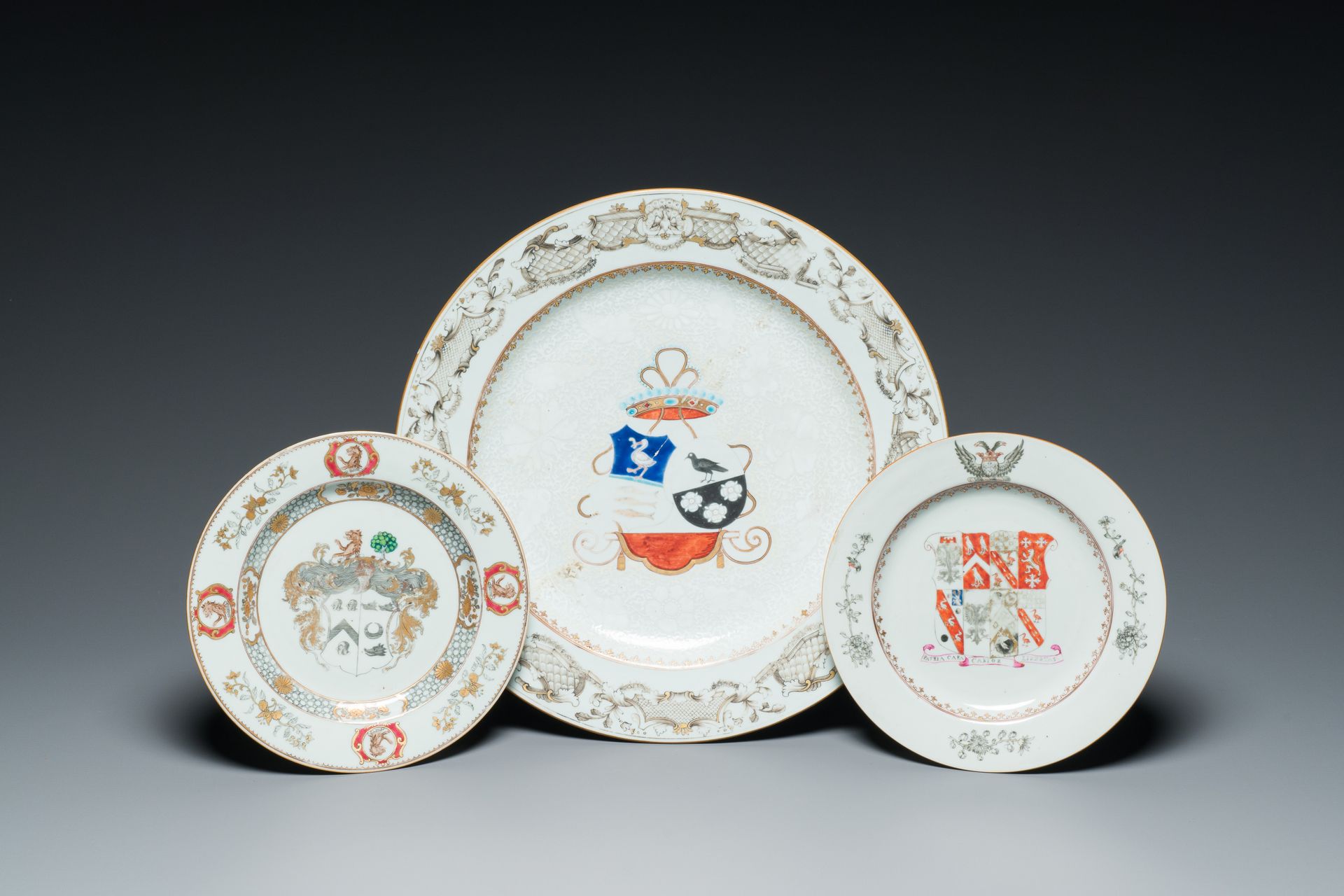Description
A Chinese grisaille armorial dish and two plates for the Dutch, English and Scottish markets, Qianlong
A Chinese grisaille armorial dish and two plates for the Dutch, English and Scottish markets, Qianlong Dia.: 38,5 cm (the dish) Dia.: 22,5 cm (the plates) Ref.: - The plate on the left with the arms of More Impaling Hog for the Scottish market. See D. S. Howard, Chinese Armorial Porcelain, vol. II, London, 2003, p. 160. - The dish in the middle with the arms of Van Schoonhoven (from Rotterdam and Leiden) and Geraerds (Haarlem) accollee, on bianco-sopra-bianco ground, the rims in the Du Paquier style. See Dr. J. Kroes, Chinese Armorial Porcelain For the Dutch Market: Chinese Porcelain with Coats of Arms of Dutch Families, 2007, p. 303, no. 218. - The plate on the right with the arms of Pleydell-Bouverie. William Bouverie, 1st Earl of Radnor, married Harriet Pleydell, daughter of Sir Mark Stuart Pleydell, Bt, on 14 January 1748. On 8 November 1750, he was appointed a deputy lieutenant of Wiltshire. On 22 September 1758, he was appointed a deputy lieutenant of Berkshire. He succeeded his father as Viscount Folkestone on 17 February 1761 and in the office of Recorder of Salisbury on 14 April 1761. On 31 October 1765, he was created Earl of Radnor and Baron Pleydell-Bouverie. Radnor was appointed a Fellow of the Royal Society on 17 December 1767. He was elected governor of the French Hospital in 1770, the first of nine earls of Radnor to serve successively in this capacity.
558
A Chinese grisaille armorial dish and two plates for the Dutch, English and Scottish markets, Qianlong
